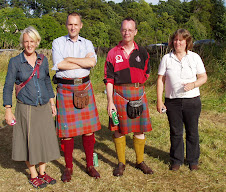I am not doing very well, these days, at thinking of the obvious.
It should have occurred to me that Lord Peter started from inside the church. As I struggled with my Japanese hat pattern, and grasped that the edging and the hat must involve a provisional cast-on, since they are knit in different directions, I should have thought that maybe you knit the hat first and then attached an edging.
I was struggling with the mental concept of knitting the edging first, with the ear-flaps somehow contained in it, until I read Jeanfromcornwall’s comment yesterday. The alternative hypothesis (knitting the hat first) was soon confirmed by Mary Lou’s comment and re-confirmed, later in the day, by my finding the Japanese characters for “pick up stitches”.
I thought of seeking help from Ravelry, although not immediately, but even then it didn’t occur to me for quite a while that someone else might have knit this very hat. In fact, five Ravellers have posted it. Two of them, the two best, seem to contribute only in Japanese. A third is French. I have sent a Ravelry message to one of the others, so far without result.
I think maybe I should try writing to the Japanese.
So the case must be – unless I am overlooking something else obvious – that you knit the hat and then pick up stitches and then knit the ear-flaps – might be a chance to try some knitting-back-backwards here – and then edge the whole thing. I can’t think of any other way to do it. A drawing of the ear-flap shows a kind of chain around it. I feel sure that I read somewhere yesterday that Japanese designers often do such a chain from which stitches are then picked up. If so, I can’t find it now.
That leaves the four-row chart for the edging itself. It contains many opacities. At that point I could just wing it, but I’d like to get it right.
Marsha at the Needle Arts Book Shop – can’t recommend highly enough – has prepared a free hand-out on Japanese knitting, downloadable from the website. I’ve got it and have printed it, back in the days when I had a functioning printer. It’s very basic, and very helpful.
She recommends this wonderful Japanese website. It’s got a good Japanese-English knitting dictionary. If you go there, be sure to look at the knitting haiku’s – lower left-hand corner of opening page.
And I love this bit. Incomprehension is a two-way street:
"'Knitting Pattern' is the biggest obstacle for Japanese. Usual English-Japanese translator tend to translate knitting pattern to Japanese text which we don't make sense. We try to make a descripton of it."
I very much like the idea of Jeanfromcornwall’s cast-on producing a “messy loopy edge” as an alternative to a provisional cast-on which is a bit of a nuisance.
All well with Amedro. A new landmark looms – soon there will be fewer stitches in each of the two wings than there are in the unchanging centre portion.
Wednesday, October 20, 2010
Subscribe to:
Post Comments (Atom)




I should, perhaps, explain more clearly what I did. I knit the garment - starting at the bottom, which was a row of mitred squares, and then picked up in the loopy cast on and knitted down to make the edging (garter stitch). Since it was a zigzag I made a stitch at the outer points, and decreased at the inner corners, to help it lie flat, so perhaps this is what the chracters are telling you to do on the chart. Are the earflaps made with increases at their edges or cast on for their sides and decreased in the middle - like a mitred square? If this is the case, you would have the cast-on stitches ready for your picking up row.
ReplyDeleteI should add that my messy cast on is only so when compared to my normal one - it may have dangly loops, but they are regular inasmuch as they are one per cast on stitch, except at the start, and it is easy enough to fudge that extra one in.